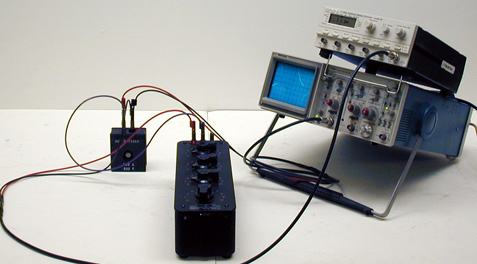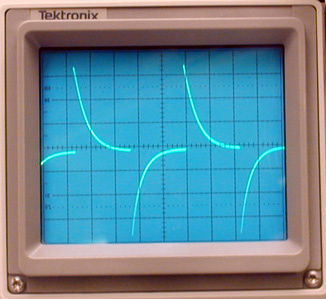Breadcrumb
5J20.10 - L-R Time Constants

|

|
Code Number: 5J20.10
Demo Title: L-R Time Constants
Condition: Good
Principle: Inductor Time Constants
Area of Study: Electricity & Magnetism
Equipment:
500 mh Standard Inductor, Resistor Box, Wave Generator (Wavetek), Oscilloscope (Tektronix 2235).
Procedure:
Arrange the generator, resistor, and inductor in series as shown. Set the generator to the square wave function. Measure across the resistor and observe the trace. Measure across the inductor and observe how the trace changes.
References:
- Bogdan M. Leu, "Direct-Current RL Circuits with Fixed Resistance and Variable Inductance", TPT, Vol. 63, #3, March 2025, p. 206.
- Carl E. Mungan, "Double-Exponential LR Circuit", TPT, Vol. 43, # 8, p. 519, November 2005.
- S. Y. Mak and P. K. Tao, "Measurement of Self-Inductance", TPT, Vol. 26, # 6, p. 378, September 1988.
- Jim Oliver, "Observing Voltage Phases in RC, RL, and RLC Circuits", TPT, Vol. 35, # 1, Jan. 1997, p. 30.
- Richard J. Duffy and Uri Haber-Schaim, "Establishing V = L (d I/d t) Directly From Experiment", AJP, Vol. 45, # 2, Feb. 1977, p. 170.
- En-6, 7, Eo-11: Freier and Anderson, A Demonstration Handbook for Physics.
- B-315: "Current Growth with Time", DICK and RAE Physics Demo Notebook.
- B-320: "Growth/Decay with Square Wave", DICK and RAE Physics Demo Notebook.
- B-470: "Calculate from Voltage Reading", DICK and RAE Physics Demo Notebook.